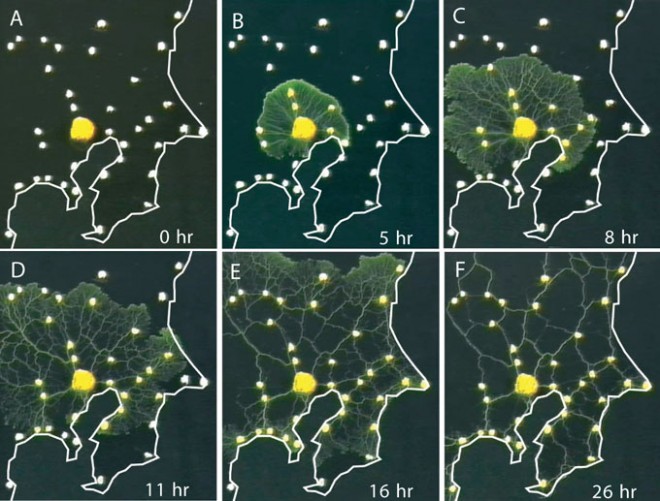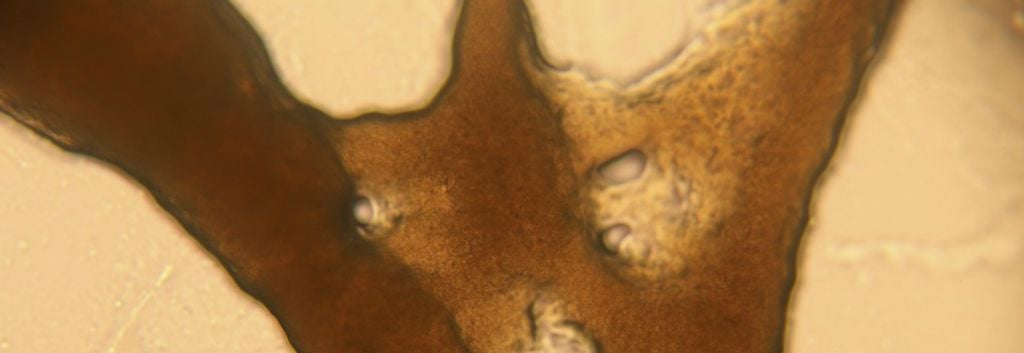Bioartist Heather Barnett explores the amusing world of a microorganism that can navigate its way around cities much like a human would do.
Physarum polycephalum, commonly known as slime mold, is a fascinating microorganism. This yellow single-celled being has no brain or nervous system, but it can play piano and write Hebrew. It can also orient itself in space, remember where it has been before, and find the shortest path to its destination.
That is, in fact, what researchers from Japan proved a few years ago, when they placed food replicating the position of the main cities around Tokyo, and found that slime mold would make the same connections that were carefully engineered to transport millions of people everyday in the most efficient way.

Bioartist Heather Barnett is now taking the microorganism to Berlin, where a series of experiments with Physarum polycephalum will explore navigation and collective behavior, and how it compares between slime mold and humans. The microorganism offers a fascinating model to study the dynamics of how ideas spread and group decisions are made, and how we interact with and respond to our environment.
Starting with a workshop around the Wedding neighborhood of Berlin and followed by an exhibition at Art Laboratory Berlin, the artist aims at introducing visitors to what she calls “an ongoing collaboration with an intelligent organism.” One day, she states, “the slime mold may be seen as the equivalent of the finches and tortoises that Darwin observed on the Galápagos Islands” when studying how high-level intelligence works.
Images via Heather Barnett; Science





